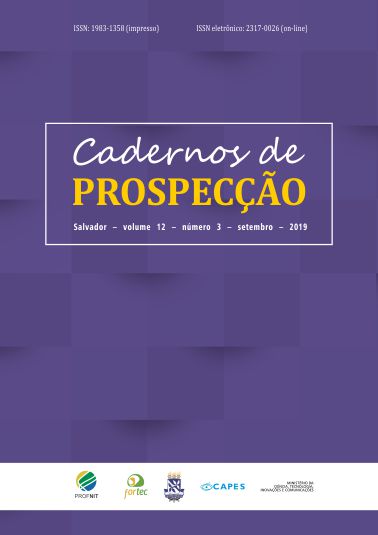Prospecção Tecnológica, Propriedade Intelectual e Inovação
DOI:
https://doi.org/10.9771/cp.v12i3.30412Resumo
A prospecção tecnológica é o primeiro passo na longa jornada da estratégia de agregação de valor a novos conhecimentos e a novas tecnologias, por meio da proteção jurídica da propriedade intelectual, visando a sua conversão em inovação. Isso porque é por meio da prospecção em bases de dados de propriedade intelectual que se consegue verificar se o objeto inovador atende ao requisito novidade, fundamental para a proteção, sobretudo por meio de patente de invenção. Esta tem por objetivo darà inovação baseada no objeto da proteção ou que o contenha a necessária segurança jurídica, de modo que o empreendedor, que aceita assumir o risco de investir para introduzir essa novidade no mercado, obtenha a vantagem de sua exclusividade por um tempo determinado.
Sabe-se que o longo caminho a ser percorrido pela materialização de uma ideia inovadora, para ser convertida em inovação, começa com sua revelação, seguida de sua prospecção, que precisar ter preenchidos os requisitos indispensáveis à proteção da propriedade intelectual, e desta receber valor transacional, como um bem intangível
a ser objeto de investimento de capital financeiro e tecnológico, a fim de chegar ao mercado produzindo riqueza e bem-estar, seja por meio do aumento da produtividade e da competitividade, seja do aumento da qualidade de vida, em síntese, em benefício da sociedade.
Há, portanto, uma lógica a ser seguida na implementação de uma estratégica destinada a incrementar a inovação que compreende diversos atores em interação e cuja colaboração é fundamental para o alcance desse objetivo, porque a pesquisa de qualidade e a criatividade nem sempre pertencem ao mesmo grupo que empreende e leva a novidade ao mercado. Por essa razão, a comunicação e a colaboração desses atores são fundamentais para o sucesso do empreendimento, que inclui múltiplas permutas, indispensável apoio financeiro e incentivos de diversas naturezas.
Como dizia Peter Drucker, a maioria das inovações resulta da busca consciente e intencional de oportunidades, e a prospecção tecnológica é fundamental não só para verificar o estado da técnica mas também para indicar territórios onde o objeto da pesquisa está sendo encontrado, permitindo o mapeamento de eventuais parceiros ou concorrentes, bem como caminhos alternativos que possam garantir a exclusividade necessária à introdução de uma inovação no mercado
Downloads
Não há dados estatísticos.
Downloads
Publicado
2019-09-13
Como Citar
Coutinho, S. V. (2019). Prospecção Tecnológica, Propriedade Intelectual e Inovação. Cadernos De Prospecção, 12(3), 474. https://doi.org/10.9771/cp.v12i3.30412
Edição
Seção
Editorial
Licença
Copyright (c) 2019 Cadernos de Prospecção

Este trabalho está licenciado sob uma licença Creative Commons Attribution-NonCommercial 4.0 International License.
O autor declara que: - Todos os autores foram nomeados. - Está submetendo o manuscrito com o consentimento dos outros autores. - Caso o trabalho submetido tiver sido contratado por algum empregador, tem o consentimento do referido empregador. - Os autores estão cientes de que é condição de publicação que os manuscritos submetidos a esta revista não tenham sido publicados anteriormente e não sejam submetidos ou publicados simultaneamente em outro periódico sem prévia autorização do Conselho Editorial. - Os autores concordam que o seu artigo ou parte dele possa ser distribuído e/ou reproduzido por qualquer forma, incluindo traduções, desde que sejam citados de modo completo esta revista e os autores do manuscrito. - Revista Cadernos de Prospecção está licenciado com uma Licença Creative Commons Attribution 4.0. Esta licença permite que outros remixem, adaptem e criem a partir do seu trabalho para fins não comerciais, e embora os novos trabalhos tenham de lhe atribuir o devido crédito e não possam ser usados para fins comerciais, os usuários não têm de licenciar esses trabalhos derivados sob os mesmos termos.
Este obra está licenciado com uma Licença Creative Commons Atribuição 4.0 Internacional.








